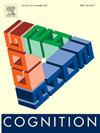探索人类凝视在不同任务和人群中的幂律行为
IF 2.8
1区 心理学
Q1 PSYCHOLOGY, EXPERIMENTAL
引用次数: 0
摘要
视觉感知是人类认知的重要组成部分。视觉包括对信息的采样和处理。任务和刺激影响人类的采样行为,而认知和神经处理机制保持不变。一个至今仍有争议的问题是这些组件是否相互作用。一些理论认为视觉认知的组成部分是独立的,它们对凝视行为的影响是附加的。另一些人则认为凝视行为是一种视觉认知的新兴结构,它是通过多重互动出现的。解决这个问题的一种方法是研究目光转移的幅度。证明凝视的转移在不同的任务中表现出一种恒定的行为,将证明人类视觉行为中存在一种独立的成分。然而,试图一般描述凝视移动幅度的研究得出了相互矛盾的结果。在这项工作中,我们分析了来自众多实验的数据,通过提供更全面的视觉行为视图来推进视觉认知的辩论。数据显示,眼球运动(也称为扫视)的幅度不能通过不同实验中的一致分布来描述。然而,我们也提出了一种新的测量眼跳大小的方法:相对眼跳长度。我们发现一个眼跳的长度相对于前一个眼跳的长度始终遵循幂律分布。我们在分析的所有数据集中观察到这种分布,无论参与者的任务、刺激、年龄或母语如何。我们的结果表明,存在一个独立的组件利用其他认知过程,而不与他们相互作用。这表明人类视觉认知的一部分是基于不依赖于刺激特征的附加成分。本文章由计算机程序翻译,如有差异,请以英文原文为准。
Exploring power-law behavior in human gaze shifts across tasks and populations
Visual perception is an integral part of human cognition. Vision comprises sampling information and processing them. Tasks and stimuli influence human sampling behavior, while cognitive and neurological processing mechanisms remain unchanged. A question still controversial today is whether the components interact with each other. Some theories see the components of visual cognition as separate and their influence on gaze behavior as additive. Others see gaze behavior as an emergent structure of visual cognition that emerges through multiplicative interactions. One way to approach this problem is to examine the magnitude of gaze shifts. Demonstrating that gaze shifts show a constant behavior across tasks would argue for the existence of an independent component in human visual behavior. However, studies attempting to generally describe gaze shift magnitudes deliver contradictory results. In this work, we analyze data from numerous experiments to advance the debate on visual cognition by providing a more comprehensive view of visual behavior. The data show that the magnitude of eye movements, also called saccades, cannot be described by a consistent distribution across different experiments. However, we also propose a new way of measuring the magnitude of saccades: relative saccade lengths. We find that a saccade's length relative to the preceding saccade's length consistently follows a power-law distribution. We observe this distribution for all datasets we analyze, regardless of the task, stimulus, age, or native language of the participants. Our results indicate the existence of an independent component utilized by other cognitive processes without interacting with them. This suggests that a part of human visual cognition is based on an additive component that does not depend on stimulus features.
求助全文
通过发布文献求助,成功后即可免费获取论文全文。
去求助
来源期刊

Cognition
PSYCHOLOGY, EXPERIMENTAL-
CiteScore
6.40
自引率
5.90%
发文量
283
期刊介绍:
Cognition is an international journal that publishes theoretical and experimental papers on the study of the mind. It covers a wide variety of subjects concerning all the different aspects of cognition, ranging from biological and experimental studies to formal analysis. Contributions from the fields of psychology, neuroscience, linguistics, computer science, mathematics, ethology and philosophy are welcome in this journal provided that they have some bearing on the functioning of the mind. In addition, the journal serves as a forum for discussion of social and political aspects of cognitive science.
 求助内容:
求助内容: 应助结果提醒方式:
应助结果提醒方式:


